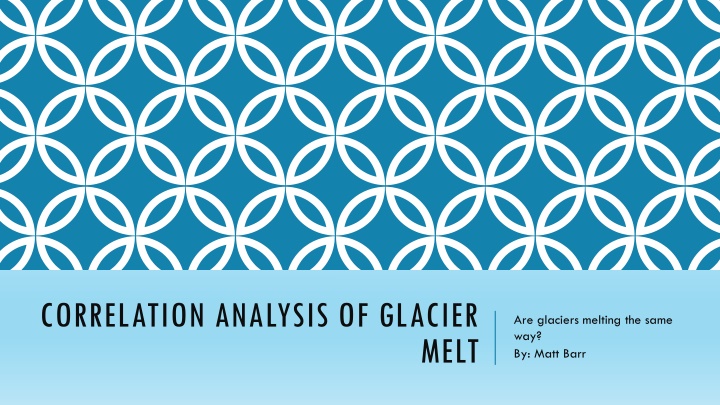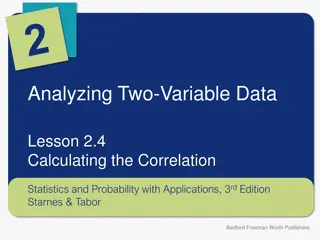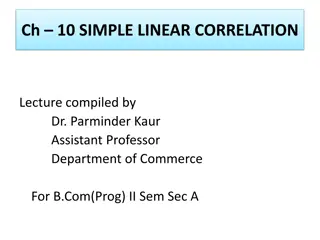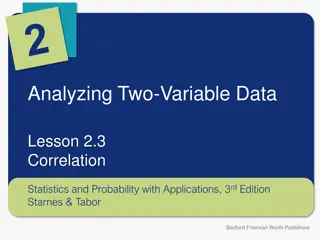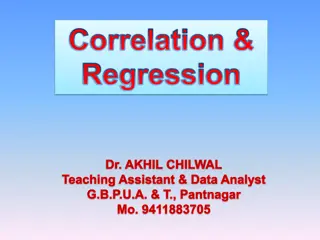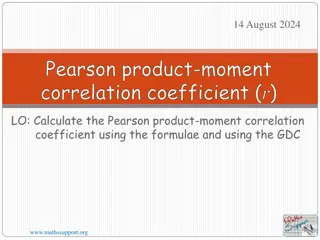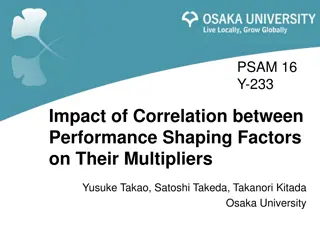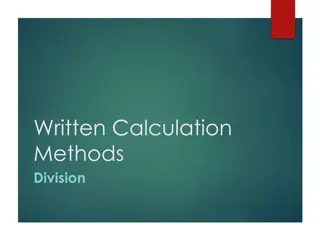Student Performance in Economics Courses and Correlation with Upper Division Courses
Student performance in Econ 160 and Econ 161 is analyzed to identify correlations with upper division courses across different departments. The study aims to lower DFU rates and better serve students, particularly in bottleneck courses. Strong correlations were found in business department students, with Marketing students showing the weakest link. Further detailed studies are suggested, including non-business students.
Download Presentation

Please find below an Image/Link to download the presentation.
The content on the website is provided AS IS for your information and personal use only. It may not be sold, licensed, or shared on other websites without obtaining consent from the author.If you encounter any issues during the download, it is possible that the publisher has removed the file from their server.
You are allowed to download the files provided on this website for personal or commercial use, subject to the condition that they are used lawfully. All files are the property of their respective owners.
The content on the website is provided AS IS for your information and personal use only. It may not be sold, licensed, or shared on other websites without obtaining consent from the author.
E N D
Presentation Transcript
CORRELATION ANALYSIS OF GLACIER Are glaciers melting the same way? By: Matt Barr MELT
INTRODUCTION Rapid glacial melt occurred during the 20thcentury, with negative trends continuing into the 21stcentury Glaciological method calculates mass balance of glaciers Reference glaciers are used as benchmarks, but they are strongly biased towards Europe and northern hemisphere This study analyzed four reference glaciers: Gries Switzerland Echaurren Norte Chile Midtre Lovenbreen Svalbard Devon Ice Cap - Canada
THE BIG MELT Data for the second half of the 20th century and first years of the 21st century illustrate significant mass loss for the world s glaciers. Glaciers experience the consequences of climate change more immediately than most other natural phenomenon, making them valuable resources to observe the effects of climate change. [Source: Global Glacier Changes UNEP] The World Glacier Monitoring Service and its predecessors have organized glacier measurements since the 1890 s, with ongoing reports on glacier fluctuations published every five years, and mass balance every other year. Source: United Nations Environment Programme
GLACIOLOGICAL METHOD OF MASS BALANCE Glaciological method involves extrapolation of mass balance estimates over the volume of a glacier. In situ measurements are taken at stake points, snow pits, and from shallow core extraction. These data are then used to calculate mass balance changes. [Source: Hanna et al. 2013] Another method, the geodetic method, utilizes aerial photography and satellite imagery. This method is considered inferior to direct measurement, but when combined with the glaciological method, can provide accurate data regarding a glacier s mass balance. [Source: Fischer 2011]
MELT TRENDS Mass Balance Slopes (mm w.e./yr) Gries = -36.07 Echaurren = -23.90 Devon = -10.94 Midtre = -3.78
CORRELATION COEFFICIENTS Gries Echaurren: -0.0667 Gries Devon: 0.3568 Gries Midtre: 0.1483
CORRELATION COEFFICIENTS Echaurren Gries: -0.0667 Echaurren Devon: 0.1292 Echaurren Midtre: -0.1079
CORRELATION COEFFICIENTS Midtre Gries: 0.1483 Midtre Echaurren: -0.1079 Midtre Devon: -0.0580
CORRELATION COEFFICIENTS Devon Gries: 0.3568 Devon Echaurren: 0.1292 Devon Midtre: -0.0580
CONCLUSIONS All glaciers analyzed exhibit negative mass balance trends; indication of eventual disappearance due to disequilibrium favoring ablation. Melting among analyzed glaciers does not appear to correlate well, lending support to the variety of ways that glacier mass balance is affected (e.g. debris cover, type, location, elevation distribution of area, local climate, etc.) Glacier mass balance changes reflect local atmospheric conditions, but total mass balance changes over the globe can be useful for observing immediate affects of changes in global atmospheric conditions.
